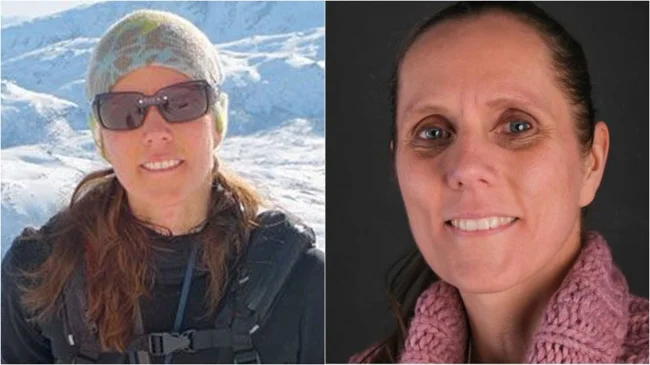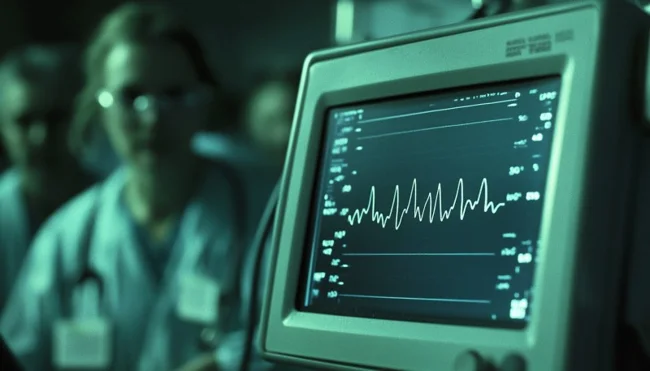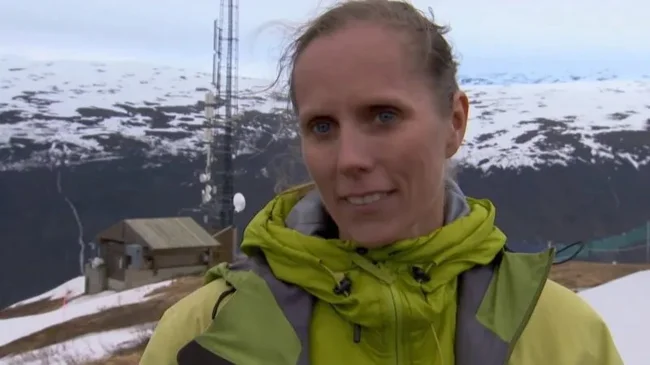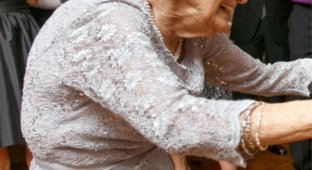Her body froze to 13.7°C. The miraculous rescue of a female skier from under the ice that changed medicine forever (6 photos)
This amazing story sounds like science fiction. But the miraculous rescue of a girl who got stuck in the ice actually happened.
The story of Anna Bågenholm has entered medical textbooks as a case of amazing survival in conditions of extreme cold. The girl spent more than an hour in icy water and was able to survive. Let's take a closer look at the story of her rescue and what new things she managed to bring to medicine. 
Anna was born in the small Swedish town of Vänersborg into a large family - she has seven more brothers and sisters. In 1999, when the incident occurred, the girl was 29 years old. By that time, Anna had trained as a surgeon and got a job at the hospital as an assistant.
This circumstance will still play a positive role, because Anna will be able to describe to the doctors in as much detail as possible what exactly she experienced and how her body reacted to it.
Anna often went skiing after work. And this day did not foretell trouble. She left with two colleagues in the evening.
Anna was descending a steep mountain slope. She had already performed this maneuver dozens of times before and was walking with maximum confidence. But suddenly she lost control. The skis were pulled and the girl fell head first onto the ice of a frozen river near a waterfall. She made a hole in the ice - it was the height of spring and the layer was relatively thin. The girl was sucked inside under the water. Anna was trapped under 20 centimeters of ice. 
Colleagues were unable to pull her out and called for help. However, after exchanging a few words, they did not expect the operation to be particularly successful. Too much time was lost until two rescue teams arrived.
However, the skier, following the famous example of an active frog in a jar of milk, diligently fought for her life. Anna found an air pocket under the ice and hid in it. The breathing issue was resolved, but a second problem arose - cooling. As it turned out later, her body temperature dropped to 13.7 ° C. The blood did not circulate, the girl did not breathe.
She spent 40 minutes under the ice before she passed out. And another half hour after that, rescuers cut through the ice and pulled out her body (they thought she had already parted with life).
The only helicopter in the area was flying to pick up a sick child at that moment. But fellow doctors persistently convinced the pilot to turn the helicopter around. By the way, everything turned out well with the baby too - the helicopter then got to him. 
WS-61 Sea King helicopter - doctors delivered a girl to the hospital on a similar model
The girl was delivered to the hospital by helicopter.
The statistics were very much against her. The survival rate of patients whose temperature dropped below 28 degrees is about 10%. Previously, it was generally believed that the human body cannot normally survive at a body temperature below 21 °C. And here we were talking about a very low temperature - 13.7 °C. And she was in the cold for too long.
At 18:20 Anna fell into the water. She was taken to the hospital at 21:10. Almost three hours in critical condition. More than a hundred doctors fought for her life for nine hours.
"She is ashen-white. She is icy. When I touch her skin, her body looks absolutely dead." Dr. Mads Gilbert
The ECG also showed no signs of life. And it is to the doctors' credit that they did not give up trying to bring the girl back to life. Intuitively, they felt that they could still help her.
The heart-lung machine accelerated and warmed her blood outside her body. Then the blood was recirculated through her vessels. An hour and a half later, her first heartbeat was recorded. And her body temperature rose to 36.4 degrees. The girl was saved! 
After 12 days, Anna woke up. And then it turned out that her entire body below the neck was paralyzed.
Anna's first reaction was unexpected. She got angry at her medical colleagues, harshly cursing them for saving her life. The girl was sure that she would have to live in paralysis for the rest of her life.
She began to have problems with her kidneys and digestive system. She needed to recover in the intensive care unit for two months.
And after that, Anna Bogenhelm got back on her feet and began to live a full life. A slight tremor in her hands remained as a reminder of the terrible event.
"Ice Woman Rises From the Dead, Asks for Forgiveness." The Associated Press article came out with this headline the next day.
The girl immediately apologized to her colleagues:
"I was furious when I woke up and realized that they had saved me. I was sure that a meaningless, humiliating life awaited me."
The girl returned to her normal life. But she could no longer be a surgeon. Although the damage to her peripheral nerves was not very severe, it was enough to disrupt the precision of movements that are so important for a surgeon. And Anna retrained as a radiologist. 
However, her main contribution to medicine is the story of her miraculous rescue.
This is how doctors explained her phenomenon.
The key to survival was the brain's reaction to the cold. Essentially, her brain froze and went into energy-saving mode. It began to consume much less oxygen to survive. The cold slowed down all biological processes. And even when her heart stopped beating, her brain continued to live in a kind of dormant state.
The cold essentially protected her brain and other vital organs from irreversible damage.
Anna's case became widely known among doctors. And now doctors have begun to use targeted therapeutic hypothermia much more often. People whose heart stops have their body temperature lowered to preserve the brain. And then the body is restored.
The second important conclusion for doctors is that they must fight for the lives of patients to the last. The fact is that before Anna's story, doctors much more often refused to resuscitate patients with a "dead" pulse, believing that they were already doomed. The case with the girl showed that the capabilities of the human body are amazing! And after that there were other cases of miraculous rescue, because doctors now, knowing Anna's story, are trying to fight for life to the end. 
Anna Bogenhelm in our days



























